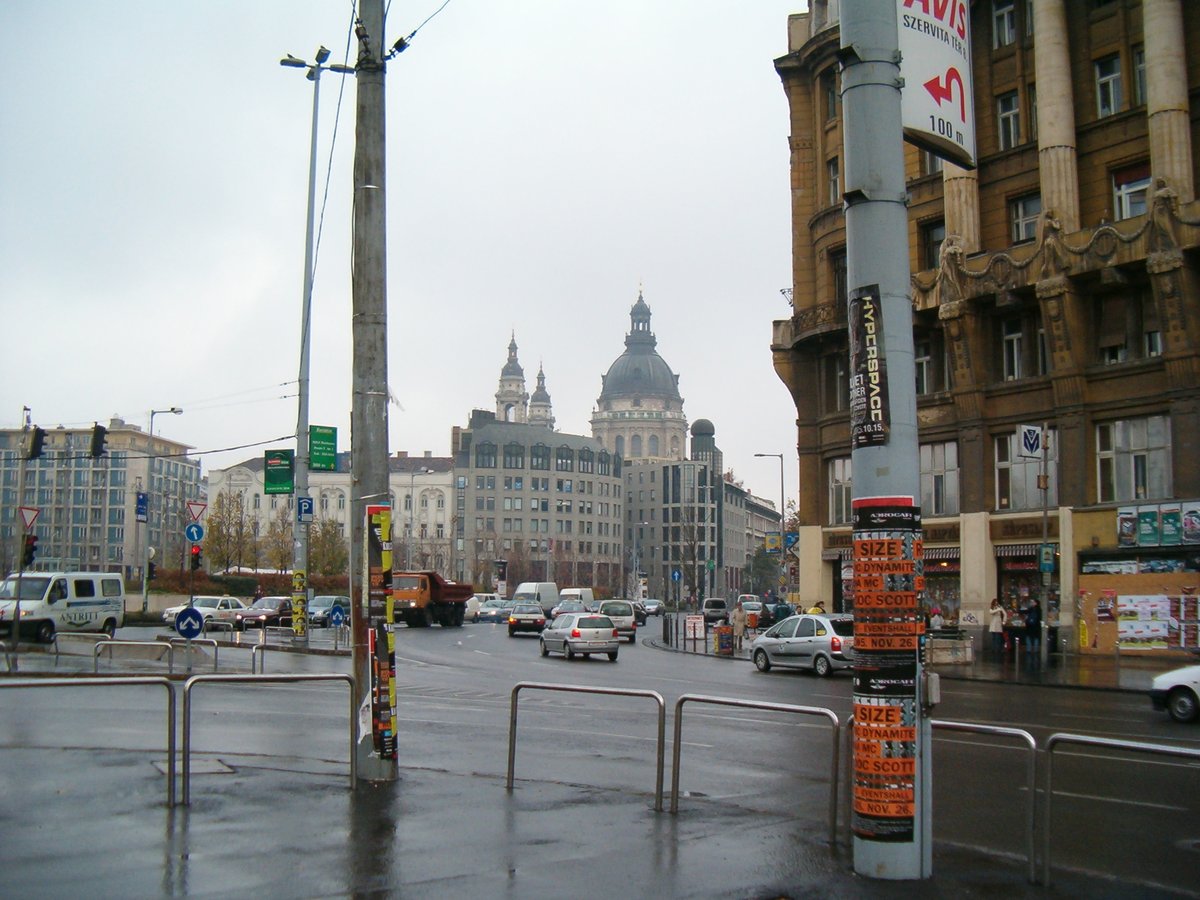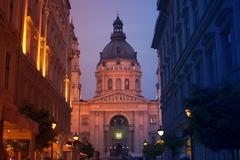
St. Stephen’s Basilica Budapest: Visiting Hours, Tickets, and Visitor Guide
Date: 14/06/2025
Introduction to St. Stephen’s Basilica Budapest
St. Stephen’s Basilica (Szent István Bazilika) is one of Budapest’s most iconic landmarks, celebrated for its architectural grandeur, spiritual significance, and role in Hungary’s national identity. Named after Hungary’s first king and saint, St. Stephen, the basilica stands as a testament to the country’s Christian heritage and artistic ambition. The basilica houses the revered Holy Dexter—the mummified right hand of St. Stephen—and features impressive neo-classical and neo-renaissance architecture, breathtaking mosaics, and panoramic city views from its 96-meter-high dome.
Whether you’re drawn by its religious importance, architectural beauty, or cultural events, this guide provides all the essential information for planning your visit, including opening hours, ticketing, accessibility, and insider tips. For official details, refer to resources like the St. Stephen’s Basilica official site, Classic Culture, and Budapest.city.
Table of Contents
- Historical Overview and Dedication
- Construction and Architectural Evolution
- The Holy Dexter Relic
- Artistic and Architectural Highlights
- Visiting Information
- Special Events
- Photography and Etiquette
- Tips for Visitors
- FAQs
- References
Historical Overview and Dedication
St. Stephen’s Basilica is dedicated to King St. Stephen (c. 970–1038), the founder of the Hungarian state and a pivotal figure in the nation’s Christianization. His reign marked the establishment of Hungary as a Christian kingdom, and his legacy is commemorated throughout the country, including in the basilica where his Holy Dexter (right hand) is preserved as a cherished relic (Classic Culture; Budapest.city).
Construction and Architectural Evolution
Origins and Challenges
The vision for a monumental church in Pest emerged in the mid-19th century, reflecting both religious devotion and civic pride. Construction began in 1851 under architect József Hild in the neoclassical style but faced major setbacks, including a dome collapse in 1868 due to structural issues (visitesztergom-budapest.hu).
Completion and Symbolism
After Hild’s death, Miklós Ybl, an eminent Hungarian architect, took over, introducing neo-renaissance elements to the design. Following Ybl’s death, József Kauser finalized the basilica, and it was consecrated in 1905. The dome, rising to 96 meters—the same height as the Hungarian Parliament—symbolizes the balance of church and state in Hungary (Classic Culture).
The Holy Dexter Relic
The basilica’s most sacred treasure is the Holy Dexter, the preserved right hand of St. Stephen. This relic, enshrined in a richly decorated chapel, has a complex history—hidden, lost, and recovered over centuries. It is paraded annually on August 20th, during Hungary’s national holiday celebrating St. Stephen’s Day (visitesztergom-budapest.hu; Budapest.city).
Artistic and Architectural Highlights
Facade and Dome
The basilica’s imposing facade features grand columns and twin bell towers. The right tower houses Hungary’s largest bell, while the dome offers one of the best panoramic views of Budapest, accessible by elevator or stairs (Budapest.city).
Interior Decoration
Inside, the basilica dazzles with mosaics, stained glass, and statues by leading Hungarian artists. The altar, crafted from white marble and topped with a statue of St. Stephen, is a focal point. The ceiling and dome are adorned with glass mosaics and windows, with significant works by Venetian artisans and Miksa Róth.
Organ and Acoustics
St. Stephen’s Basilica is renowned for its exceptional organ, boasting over 7,000 pipes and hosting regular classical concerts, especially during Christmas, Easter, and summer. The acoustics are considered among the best in Europe (Ticket Budapest).
Visiting Information
Hours and Admissions
- Monday to Saturday: 9:00 AM – 5:00 PM
- Sunday: 1:00 PM – 5:00 PM
Opening hours may change during holidays or special events; consult the official website for updates.
- Admission: As of 2023, tickets are required for entry. Standard ticket: 2,000 HUF; children under 12 enter free. Dome access requires a separate ticket (approx. 3,200 HUF). (The Common Wanderer)
- Guided tours and audio guides: Available for an additional fee. Combo tickets may include treasury access, organ concerts, or other attractions (Ticket Budapest).
Getting There
- Location: Szent István tér 1, Budapest 1051, Hungary
- Metro: Deák Ferenc tér (M1, M2, M3 lines)
- Tram: 47, 49
- Bus: Multiple lines serve the area
Accessibility
The basilica is wheelchair accessible, with entrance ramps, elevators, and accessible restrooms. The dome is reachable by elevator, though the final ascent to the panoramic terrace involves a spiral staircase (The Common Wanderer).
Guided Tours
Guided tours in several languages provide in-depth exploration of the basilica’s art, history, and treasures, including the treasury and organ loft. Booking ahead is recommended, especially in peak seasons (Ticket Budapest).
Best Visiting Times
- Early mornings and late afternoons are quieter, ideal for reflection and photography.
- Sunset offers stunning views from the dome.
- Avoid midday crowds, especially on weekends and during major holidays.
Special Events
- August 20th: St. Stephen’s Day procession and national celebrations.
- Organ Concerts: Regular performances showcase the basilica’s renowned acoustics (Ticket Budapest).
- Christmas and Easter Markets: Festive markets and illuminations on the basilica square create a magical atmosphere (The Common Wanderer; Trip to Budapest).
Photography and Visitor Etiquette
- Photography: Allowed without flash or tripods.
- Dress code: Modest attire is required; cover shoulders and knees, especially during Mass.
- Conduct: Maintain silence and respect during religious services; avoid touching artworks.
Tips for Visitors
- Book tickets in advance to avoid queues and guarantee your preferred tour or concert time (Ticket Budapest).
- Allow 1–2 hours for a comprehensive visit, including the dome and treasury.
- Plan for security checks and avoid bringing large bags.
- Combine your visit with nearby attractions like the Parliament, Chain Bridge, and Váci Street.
- Visitor amenities: Numerous cafés, restaurants, and shops are nearby; public restrooms available.
Frequently Asked Questions (FAQ)
Q: What are the basilica’s opening hours?
A: Monday–Saturday 9:00 AM–5:00 PM; Sunday 1:00 PM–5:00 PM. Check for changes on holidays.
Q: Is there an entrance fee?
A: Yes, since 2023 entry requires a ticket (children under 12 are free). Dome access requires a separate ticket.
Q: Are guided tours available?
A: Yes, in several languages. Advance booking is recommended.
Q: Is the basilica wheelchair accessible?
A: Yes, with ramps and elevators; the dome platform is accessible by elevator.
Q: Can I take photos inside?
A: Yes, but no flash or tripods.
Q: Are concerts held here?
A: Yes, regular organ and classical music concerts take place throughout the year.
References
- St. Stephen’s Basilica official site
- Classic Culture
- visitesztergom-budapest.hu
- Budapest.city
- Gems of Budapest
- The Common Wanderer
- Ticket Budapest
- Trip to Budapest
- St. Stephen’s Basilica Virtual Tour
For more travel advice and updates on Budapest’s historical sites, download the Audiala app and follow us on social media. Enhance your trip with virtual tours and insider tips.








































































































































































